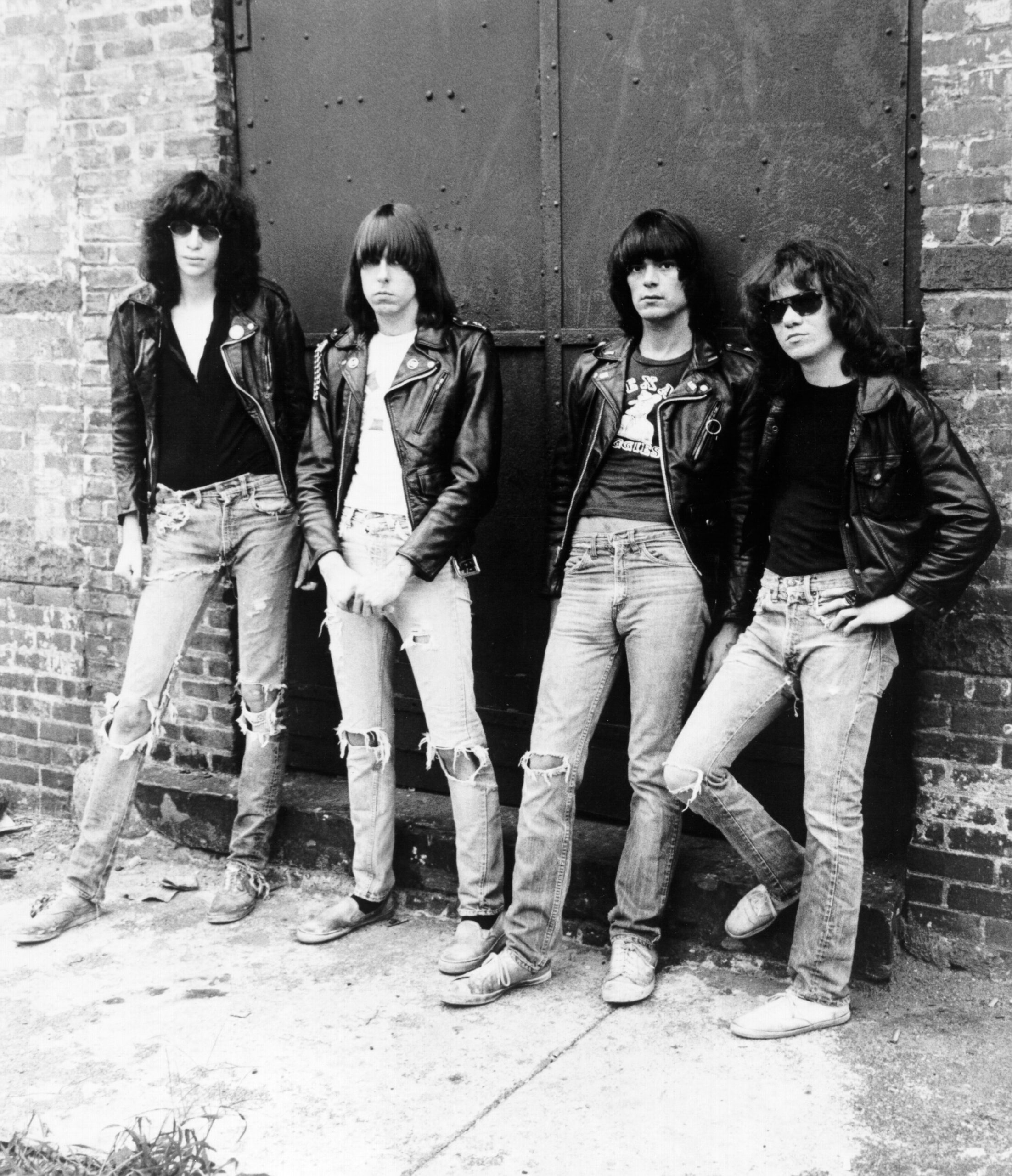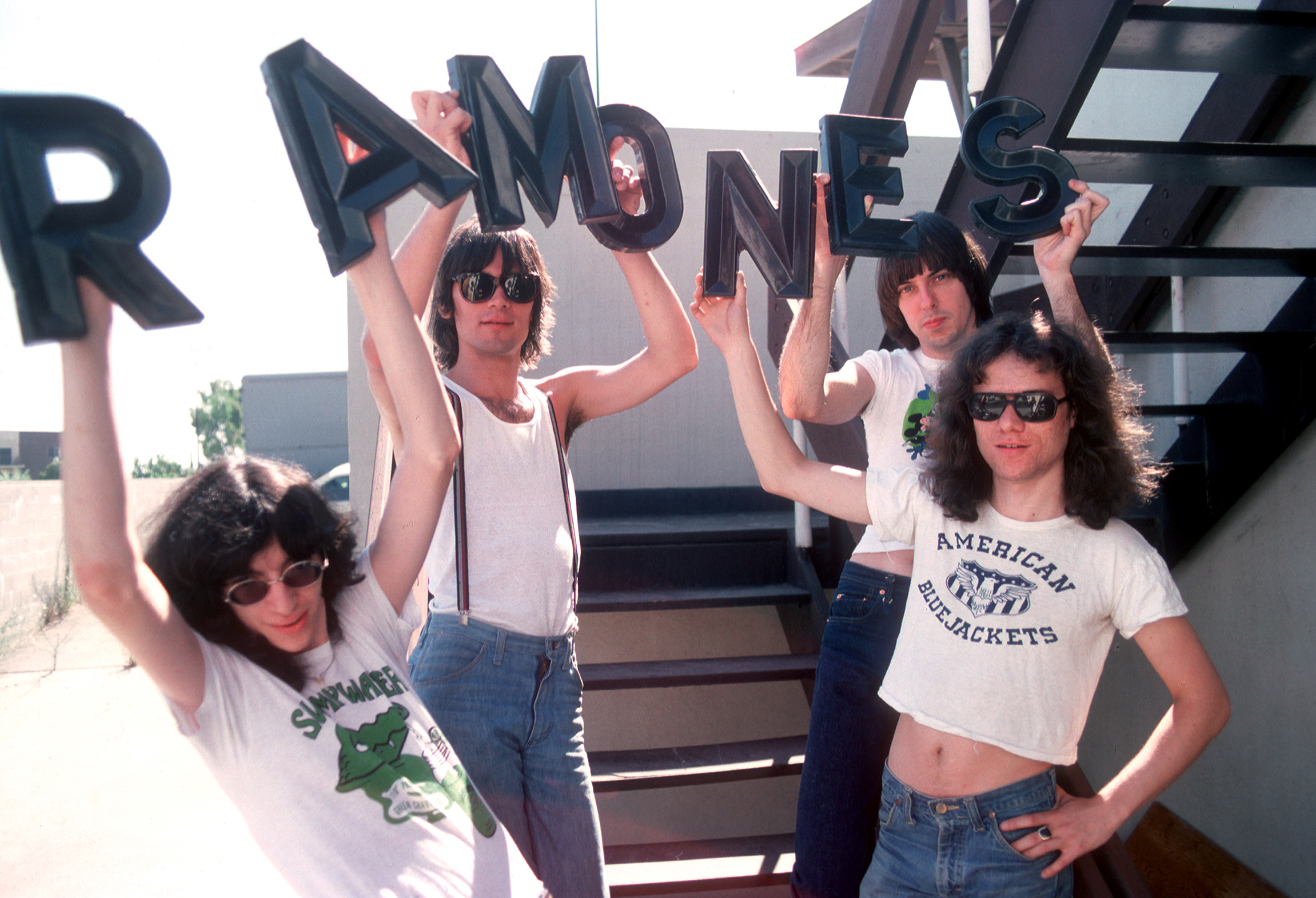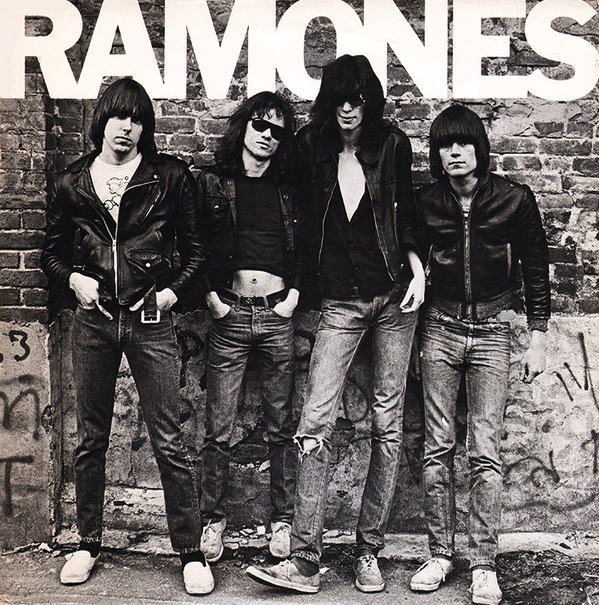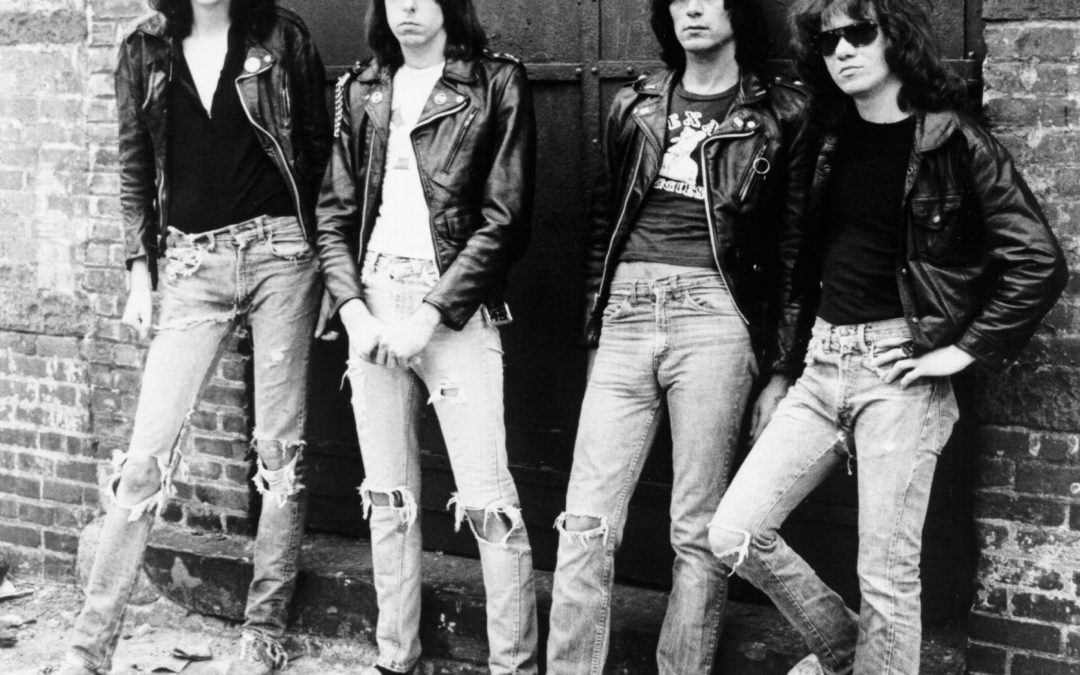Mojo
Presents
All revved up and ready to go!
How four Forest Hills “thugs” with Fabs fixations revivified rock’n’roll with an injection of raw speed and psycho thrills. Fresh from recognition at the Grammys, in May 2011 drummer Tommy Ramone told us the blink-and-you’ll-miss-it story of the Ramones’ first album.
As told to Bob Mehr

Joey, Johnny, Dee Dee and Tommy Ramone on the mean streets on NYC, 1976.
A YEAR BEFORE MAKING THE FIRST record, we had done a demo at a small studio out on Long Island, so we already had the blueprint in mind. What we were looking for was a quirky thing, actually. I had been listening to a lot of early Beatles records and they had these weird stereo mixes – because I guess they were focusing on the mono mixes, and the stereo mixes were an afterthought. So the stereo mixes were really odd-sounding, with things just in the left channel or just in the right channel. And it gave a weird effect when you listened to it. As a concept we were thinking of imitating that. So we were taking elements of that and combining it with some original arrangement ideas. And we had a very original sound to begin with.
So when we went into the studio in February ’76, we brought those ideas with us. Most of the songs were ready to go, because of our experience of recording the demo. That’s how we were able to record the first album so quickly.
The record company chose the studio, because they had a deal there. It was Plaza Sound in the Radio City Music Hall building, which was originally a radio station studio. There were some serious budgetary considerations. We had a very small budget [reportedly $20,000, of which $6,400 was spent]. I think possibly [Sire] had no money at the time. We ended up doing two or three days recording tracks and overdubs, and part of that was for Joey’s vocals, and then we did a 14-hour marathon mix session. I don’t think it was more than five days altogether.
The biggest problem was the lack of time. There was very little room for trial and error. Plus there were all these unknowns: the studio itself, working with [A&R man/co-producer] Craig Leon, whether Sire would even approve of what we were doing. Plus, the house engineers we were working with had no clue what the hell we were doing. They thought a bunch of thugs had come into the control room. It was really strange, what we were asking them to do. Everybody was a little nervous.
Looking back, all the Ramones recording sessions were all the same – the guys just wanted to get it done quickly. We went in very prepared. The guys weren’t particularly intimidated by the studio. They were comfortable. I had worked at the Record Plant, and had experience as an engineer, so they trusted me. We just set things up and did it. At the most we did two takes of the songs. That was great for them, because they wanted to get out of there as soon as possible. Once the basic tracks were done Johnny and Dee Dee were gone. And that was good for me because I could work with Joey to do the vocals, and to do some overdubs. That was kind of the methodology.
“We saw this album as a wake-up call. We were going to revive the pop song mentality.”
TOMMY RAMONE
The first day we went in there I had a really bad cold. We set things up and did some tracks, but we decided to scrap the stuff we’d done the first day. We came back the second day and started fresh. When I had the cold I felt like I was underwater, which is no good for a drummer. So I went back in with a clear head and did the job.
We decided to try separation on the instruments. Craig Leon was looking for that. So we put everyone in different rooms, which was kind of weird because we had no communication except through headphones; we had no line of sight. I never worked like that ever again. But that was an interesting way to record.
In terms of the material, we chose the best songs we had; I had just written I Wanna Be Your Boyfriend and Blitzkrieg Bop with Dee Dee. Though we did save some of our better songs for later albums – we had things like I Don’t Care, which ended up on Rocket To Russia. The bands we were influenced by were the MC5, The Stooges, and Joey was very much influenced by Alice Cooper. We had all these influences but we didn’t sound like these other acts. We kinda came up with our own thing.

Spelling it out: Ramones’ lead singer Joey, bassist Dee Dee, guitarist Johnny and drummer Tommy.
I THINK THAT FIRST RECORD WAS THE RAMONES sound combined with some Beatles recording techniques – that was the one group we were all crazy about. And at that time The Beatles were not being discussed, it was a lull in Beatleology. I think we saw this album as a wake-up call. The whole Ramones thing was a wake-up call, because in the early ’70s things had gotten so far away from everything that was happening in the mid-’60s when we’d all fallen in love with music. We were going to revive the pop song mentality. But also we wanted to create an album with that feel – we weren’t just interested in individual singles, but an album that would play as a set of songs. That signature sound of the Ramones was really developed at rehearsals. The trick was trying to get as much of that in a recording session.
Once I started playing drums with them, we started going for this specific flowing feel. When we were trying out drummers none of them worked out because their drumming just didn’t click in with Johnny’s guitar style. The style of drumming that was popular at the time just didn’t suit the Ramones. Most people were playing like John Bonham or Carmine Appice; they were incredible drummers, but their use of tom-toms and rolls just didn’t fit with what the Ramones were doing. They would just get confused, that was the problem.

“One, two, three, four!” The cover of the album that would change the New York music scene forever… and style a million punk kids while it was at it.
When I decided to start playing drums, I wanted to lock in with the guitar and try and get a forward momentum going. Most people assume the rhythm, the bass and drums, lock in together. But with the Ramones it was more the guitar and drums. I locked in with Johnny, and Dee Dee’s bass was the underpinning of it all. Johnny had this very flowing thing because of his strumming technique. Interestingly, Johnny was influenced by the group Love; Arthur Lee and the guitar player Bryan MacLean had a choppy sound that Johnny liked. Johnny was also influenced by Mick Ronson’s work on Ziggy Stardust. But once he started playing he couldn’t help but sound like himself.
Joey’s vocals were very easy to capture. He was very good at double-tracking. A lot of people have trouble double-tracking, but Joey was great at it. We’d just get the best take possible and then double it. Again, it was back to the Beatles records, the way Lennon would double-track his voice. The Ramones songs were so unusual and borderline psychotic, that we wanted a pop element in there. And double-tracking is a very pop effect.
That record was really the sum of all our tastes: we liked eccentric music, we liked pop music, we liked very heavy music. We were into so many different things and we kind of combined them all. The combination of all those elements, that sort of became our aesthetic, I suppose. Once we were finished, there was no way we were going to be totally crazy about something that had to be done so quickly. But the album has its own charm. I wasn’t able to elaborate as much as I would’ve liked. So some of the things are not 100 per cent what we were aiming for. But, overall, it worked out because that album was totally unique in its sound. In a strange way, it’s a lo-fi work of art.
This article originally appeared in MOJO 210
Photograpy: Getty

